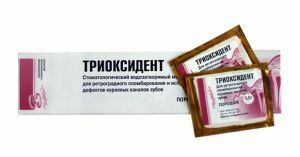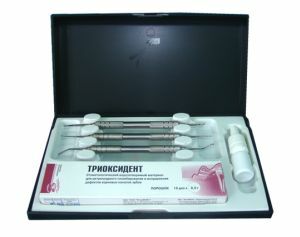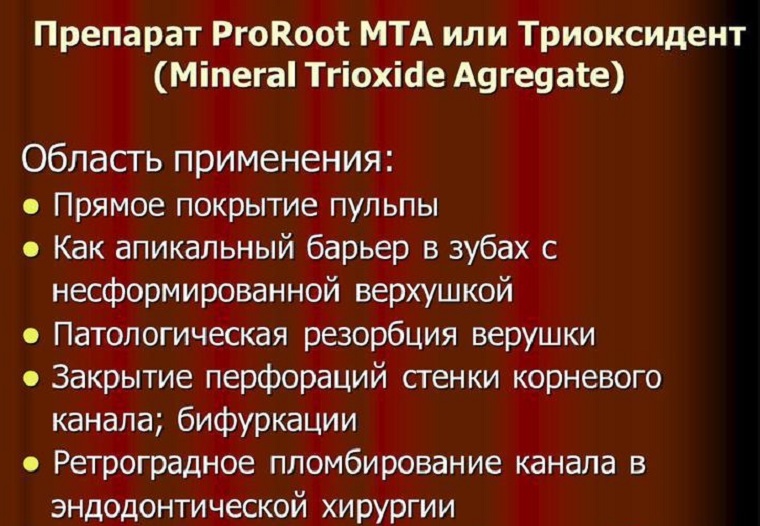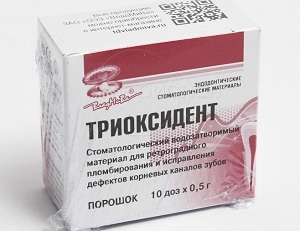 Stable teeth with problem unformed roots present a serious problem. And external damage causes aggravation of the condition of such complex teeth. If you postpone your visit to a dentist or get a poor-quality treatment, then necrosis of hard tooth tissues can develop, causing strong and rapidly progressive pulpitis.
Stable teeth with problem unformed roots present a serious problem. And external damage causes aggravation of the condition of such complex teeth. If you postpone your visit to a dentist or get a poor-quality treatment, then necrosis of hard tooth tissues can develop, causing strong and rapidly progressive pulpitis.
The best method of treatment in this case is apexification using calcium hydroxide. However, these materials have a number of drawbacks.
A unique MTA material has been developed through extensive laboratory studies. But its high price forces many dentists to abandon its use in their practice, despite its excellent properties.
The company "VladMiVa" created an innovative material Trioxident( Trioxident), which is an analogue of the AIT and practically replaced it in practical dentistry. It is much more affordable, and in quality is not inferior to its predecessor.
The new material is highly effective, it improves the quality of retrograde filling. Compact and non-permeable packaging allows you to work comfortably with the drug.
Contents
- Composition and Form of Release
- Scope of Application
- Properties and Features
- Scheme of Application
- Storage Conditions
Composition and Form of Release
Trioxident consists of perfectly matched active ingredients. Increased alkalinity is obtained from oxides of calcium, silicon and aluminum. These elements give the material strength, the ability to hermetically close flaws in the channel, prevent the entry of bacteria into the tooth cavity, and the solubility of the drug remains low, which allows obtaining a high biocompatibility.
Copper and calcium hydroxide serves as a bacteriostatic additive. Bismuth oxide gives excellent radiocontrast.
Form release: 
- powder;
- bottle-dropper.
Additional equipment:
- mixing mold;Spread knife
- ;
- tool kit for retrograde sealing;
- tubes made of plastic F-4D by 4 and 8 mm;
- detailed instructions for use;
- box is case.
Scope
Trioxident, in its way, is a universal tool:
- is used for retrograde sealing;
- is used as a treatment pad for pulp isolation;
- is used to close the perforations of the root canals;
- material is filled with the upper apex portion of the dental canal.

Properties and features of
The material solidifies in the channel for four hours, after a full set time in a day. This adds to it the advantages over all existing analogues.
The solidification process takes place in three stages:
- interacting with water, calcium oxide is converted to calcium hydroxide, which provides increased alkalinity;
- due to the calcium hydroxide saturation, all elements are transformed into a homogeneous elastic mass;
- calcium hydroxide saturates a mixture of the resulting calcium silicate, while increasing the plasticity of the mass.
Modern methods of treatment suggest retrograde root shelter. To improve the quality of this procedure is ideally suited material Trioxident.
They are sealed and close the upper base of the tooth canal, close the perforation of the root canal, cover the tooth pulp. The drug has excellent bactericidal properties, hermetically covers the reamed cavities.
Scheme of application
 The material is kneaded on a glass plate with a clean trowel. The required dose of powder and purified water are combined in proportions of 3: 1.The mixture is brought to a plastic consistency. The resulting plastic paste is filled with the defect zone. As the material dries, addition of water( once) is allowed.
The material is kneaded on a glass plate with a clean trowel. The required dose of powder and purified water are combined in proportions of 3: 1.The mixture is brought to a plastic consistency. The resulting plastic paste is filled with the defect zone. As the material dries, addition of water( once) is allowed.
When restoring perforations, it is recommended to carefully prepare the dental canals. After that, the channels are treated with sodium hypochorite and washed well. Having established a lesion site, obturation of all canals takes place. The resulting paste is applied directly to the lesion site and strengthened using an ultrasound nozzle.
With root apexification, the initial preparation of the affected canal is performed. After removing all impurities, the channel is washed and dried with dry pins. The next stage is disinfection.
Next, a paste made on the basis of potassium hydroxide is carefully applied. It should be in the root canal for a week. At the end of this period, the paste is removed and the channel is washed with sodium hypochloride.
Storage conditions
Trioxidant is the only analogue of MTA material, but more affordable. You can order it and other dental products from official distributors.
Store the material in a sealed container in a dry place at room temperature. The drug is suitable for two years. It is important to ensure that it does not get moisture.
